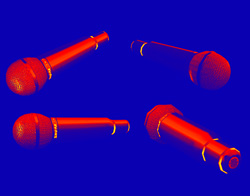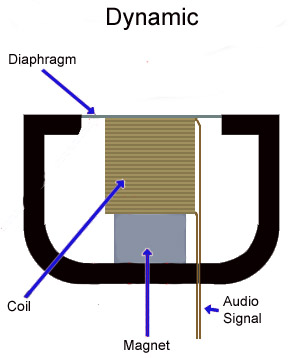In the midst of talking about mics and mic preamps, the timely subject of mic modeling hardware and software has been raised.
So, here’s my take on mic modelers. They may change the sound of the audio that passes through them, but there are major problems that mic modelers can’t get around: namely, the laws of physics and the limits of metallurgy.
I’m not alone with these thoughts – a bit later in this article, Norbert Sobol, a noted microphone designer at AKG, offers his views on the subject.
I have sat semi-transfixed and listened to people who know more than you and I will ever know about microphones. As I stand on the shoulders of these giants, I can point to convincing reasons why mic modelers cannot be used to get a Neumann U 87 sound out of a Shure SM58.
First, although dynamic and ribbon mics both share somewhat similar operating principles, they operate very differently than condenser microphones. The dynamic has a coil of wire attached to a diaphragm hovering in a magnetic field.
The ribbon mic has a very thin metallic ribbon quavering in the throat of a magnetic field. The basic principle is that, as long as the diaphragm or ribbon are kept in motion, a voltage is generated. If they stop moving at any time, no voltage is generated.
Of course the mechanical response of a diaphragm/coil is obviously not the same as that of a ribbon, which explains why they don’t sound the same.
The physics distinguishing the condenser mic are even more marked than those separating dynamics and ribbon mics. In a condenser you have a collection of moveable and fixed electrical plates; one fixed plate, and at least one moving diaphragm, sometimes two.
The diaphragms of a condenser microphone move much more quickly in response to sound waves than dynamic diaphragms.
That gives condenser microphones the ability to capture the those most subtle and fragile parts of a sound wave we call transients; very brief moments of sound that define the high frequency content of a sound.
The condenser capsule is also different in that a voltage is generated as long as it’s responding to a sound wave. Even if that sound could be such that it held the diaphragm micro-momentarily still in a compression or rarefaction, a voltage would be generated.
That’s because a condenser generates its signal as a result of the diaphragm moving closer to and farther away from the backplate.
Even amid condenser mics, the diaphragm material makes a difference, as does the tension used to stretch the diaphragm as it’s attached to the capsule.
The more tension, the less movement and the higher the resonant frequency of the diaphragm.
Older PVC diaphragms get brittle with age and that changes the character of the mic. We haven’t seen that sort of change with Mylar, but who knows how Mylar will age over time.
Then there are the metallic coatings to consider. I know people who could fill your ears to overflowing about the special properties of nickel and how much a part of the early Neumann sound comes from audio engineers who know how to use nickel.
For better or worse, there aren’t many nickelsmiths still alive. Now we have gold and titanium-coated diaphragms. The metal makes a difference.
Physics are also involved in what happens to the sound after it passes through the headgrille. Inside a condenser headgrille there exists a unique acoustical micro-environment comprised of the capsule, the mount that holds the capsule and the reflective and absorptive characteristics of the inside of the head grille—along with anything else reflective or absorptive.
The shape and substance of capsule’s mount base also have direct bearing on what happens to the sound before and after it hits the diaphragm.
The inside grille work is also an active participant, because sound that passes through the grille to the capsule may pass the capsule and can reflect back off the inside of the grille and back onto the capsule or somewhere else.






















